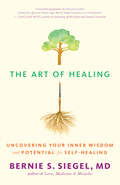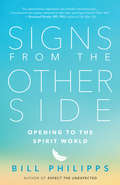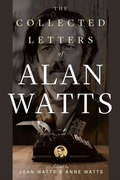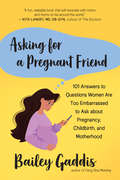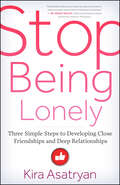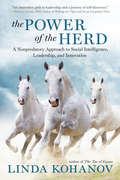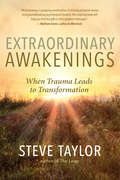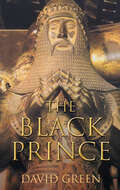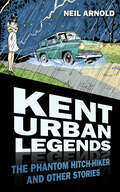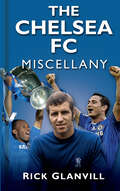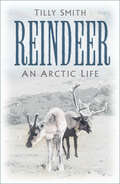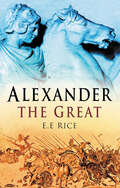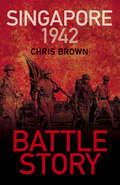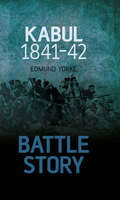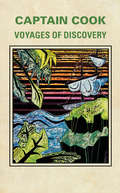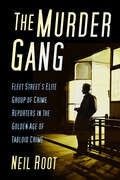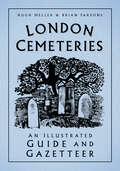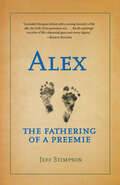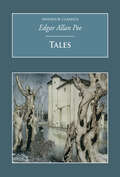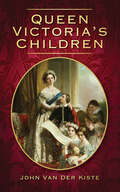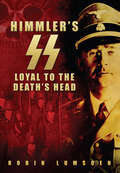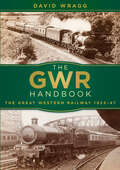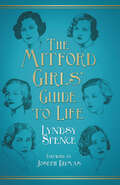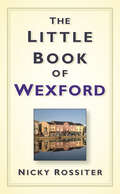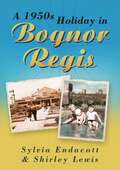- Table View
- List View
The Art of Healing: Uncovering Your Inner Wisdom and Potential for Self-Healing
by Bernie S. SiegelIn 1979, Dr. Bernie S. Siegel, a successful surgeon, took a class from Elisabeth Kübler-Ross that focused on crayon drawing for healing, especially with patients facing life-threatening disease. Siegel incorporated into his practice these techniques — many of which were laughed at by others in the medical community. But his Exceptional Cancer Patients “carefrontation” protocol facilitated healings, often deemed miraculous, and attracted attention. “Dr. Bernie” discovered and shared the fact that while patients might need antibiotics, surgery, radiation, and chemotherapy, their bodies also want to heal. He found that this innate propensity could be aided by unconventional practices, including drawing. Why? Drawing produces symbols often representing the subconscious. Siegel shows how to interpret drawings to help with everything from understanding why we are sick to making treatment decisions and communicating with loved ones. All those facing ill health, and those caring for them, personally and professionally, will welcome the hands-on, patient-proven practices offered here.
Signs from the Other Side: Opening to the Spirit World
by Bill PhilippsLOVE NEVER DIES Finding comfort through communication With stories and insightful suggestions, beloved psychic medium Bill Philipps demonstrates that our loved ones on the other side are available to us. He promises that, with an open heart and mind ready to receive, anyone can recognize the signs that spirits of the departed may be trying to send. Signs from the Other Side offers an in-depth explanation of how Bill does what he does, as well as practical advice on how to receive and interpret signs when they appear. By tapping into our intuition, we can experience deep connections that lead to forgiveness, reassurance, or simply one last moment with a loved one. The book also includes more than twenty inspiring examples of how others experienced comfort through such communications.
The Collected Letters of Alan Watts
by Alan WattsPhilosopher, author, and lecturer Alan Watts (1915–1973) popularized Zen Buddhism and other Eastern philosophies for the counterculture of the 1960s. Today, new generations are finding his writings and lectures online, while faithful followers worldwide continue to be enlightened by his teachings. The Collected Letters of Alan Watts reveals the remarkable arc of Watts&’s colorful and controversial life, from his school days in England to his priesthood in the Anglican Church as chaplain of Northwestern University to his alternative lifestyle and experimentation with LSD in the heyday of the late sixties. His engaging letters cover a vast range of subject matter, with recipients ranging from High Church clergy to high priests of psychedelics, government officials, publishers, critics, family, and fans. They include C. G. Jung, Henry Miller, Gary Snyder, Aldous Huxley, Reinhold Niebuhr, Timothy Leary, Joseph Campbell, and James Hillman. Watts&’s letters were curated by two of his daughters, Joan Watts and Anne Watts, who have added rich, behind-the-scenes biographical commentary. Edited by Joan Watts & Anne Watts
Asking for a Pregnant Friend: 101 Answers to Questions Women Are Too Embarrassed to Ask about Pregnancy, Childbirth, and Motherhood
by Bailey GaddisThe Straight Scoop on the Questions That Make You Blush Why do I feel turned on when breastfeeding? Could an epidural paralyze me? Am I awful for feeling sad my baby isn&’t the sex I&’d hoped for? In this comprehensive new book, doula and birth educator Bailey Gaddis offers frank girlfriend talk and expert advice about pregnancy, childbirth, and early motherhood. During her own pregnancy, Bailey had many unanswered questions she felt were too taboo or embarrassing to ask. To help other women have a more informed, less cringey experience, she went on to train as a birth professional, and her work has inspired this book. Bailey consulted with medical experts and psychologists to ensure accurate answers to the featured questions, and she presents her sought-after expertise to you with thoughtfulness and humor. Her accurate, nonjudgmental answers to even the most embarrassing or scary questions will help guide you through pregnancy and the first weeks of motherhood with greater calm and confidence.
Stop Being Lonely: Three Simple Steps to Developing Close Friendships and Deep Relationships
by Kira AsatryanLoneliness Has an Antidote: The Feeling of Closeness Loneliness isn’t something that happens only when we are physically alone. It can also happen when we are with people. Online friends, followers, or “likers” don’t necessarily add up to much when you crave fulfilling interaction, and satisfying, long-term relationships are not a mystery to be left up to chance (or technology). The good news is that, according to relationship coach Kira Asatryan, loneliness has a reliable antidote: the feeling of closeness. We can and should cultivate closeness in our relationships using the steps outlined in this book: knowing, caring, and mastering closeness. Whether with romantic partners, friends, family members, or business colleagues, these techniques will help you establish true closeness with others. The simple and straightforward actions Asatryan presents in this wonderfully practical book will guide you toward better relationships and less loneliness in all social contexts.
The Power of the Herd: A Nonpredatory Approach to Social Intelligence, Leadership, and Innovation
by Linda KohanovLinda Kohanov is beloved for her groundbreaking articulation of “the way of the horse,” an experiential wisdom known to riders for centuries but little studied or adapted to off-horse use. Now Kohanov takes those horse-inspired insights on the nonverbal elements of exceptional communication and leadership into the realms of our workplaces and relationships. Here we explore the benefits of “nonpredatory power” in developing assertiveness, fostering creativity, dealing with conflict, and heightening mind-body awareness. In “A Brief History of Power,” the first part of this far-reaching book, Kohanov profiles cultural innovators who employed extraordinary nonverbal leadership skills to change history, usually on horseback: Winston Churchill, George Washington, Alexander the Great, and Siddhartha Gautama (the Buddha), among others. She also draws on the behavior of mature horse herds, as well as the herding cultures of Africa and Mongolia, to debunk theories of dominance hierarchies, challenge ingrained notions of “survival of the fittest,” and demonstrate the power of a consensual leadership in which governing roles are fluid. Kohanov then adapts these lessons into twelve powerful guiding principles we can all incorporate into our work and personal lives. Eloquent and provocative, this is horse sense for everyone who seeks to thrive in the herds we all run in — our communities, careers, families, and friendships.
Extraordinary Awakenings: When Trauma Leads to Transformation
by Steve TaylorA compelling investigation of how intense psychological suffering can lead to a dramatic shift into a new, expansive identity Why do some people who experience the worst that life has to offer respond not by breaking down but by shifting up, into a higher-functioning, awakened state, like phoenixes rising from the ashes? And perhaps more importantly, how can we emulate their transformations? Over many years of observing and studying the phenomenon of life-changing awakening through extreme suffering, Steve Taylor coined the term &“transformation through turmoil.&” He calls these people &“shifters&” and here shares dozens of their amazing stories. In addition, Taylor uncovers the psychological processes that explain these miraculous rebirths after years of struggle or devastating loss, addiction, or imprisonment. He highlights a number of lessons and guidelines that the shifters offer us. In Extraordinary Awakenings, readers will find not only riveting stories of transformation that show the amazing resilience of the human spirit, but also hope and guidance to call on during their own struggles, together with inspiration and profound food for thought.
The Black Prince
by David GreenOne of the most charismatic and enigmatic personalities of the High Middle Ages, Edward the 'Black Prince' commanded an English division at the battle of Crecy at just 16 years old. But despite his battlefield exploits, romantic reputation, and popularity among the people, Edward has become notorious as a proponent of 'scorched earth' campaigns, or chevauchee. These expeditions amounted to little more than the licensed plunder of undefended towns and the murder of non-combatants. The premature death of Edward saw his infant son ascend to the throne and led, eventually, to the fraticidal chaos of the Wars of the Roses and the emergence of the Tudor dynasty. In this startling reappraisal of the prince's life, David Green assesses his actions in their historical context and examines what might have been had Edward the Black Prince become King Edward IV.
Kent Urban Legends: The Phantom Hitchhiker and Other Stories
by Neil ArnoldDo motorists pick up a phantom hitchhiker on Blue Bell Hill during stormy nights? Does Satan appear if you dance round the Devil's Bush in the village of Pluckley? Do big cats roam the local woods? And what happens if you manage to count the 'Countless Stones' near Aylesford? For centuries strange urban legends have materialised in the Garden of England. Now, for the first time, folklorist and monster-hunter Neil Arnold looks at these intriguing tales, strips back the layers, and reveals if there is more to these Chinese whispers than meets the eye. Folklore embeds itself into a local community, often to the extent that some people believe all manner of mysteries and take them as fact. Whether they’re stories passed around the school playground, through the internet, or round a flickering campfire, urban legends are everywhere. Kent Urban Legends is a quirky and downright spooky ride into the heart of Kent folklore.
The Chelsea FC Miscellany
by Rick GlanvillChelsea FC, as someone once observed, has always done what other clubs have done, but not necessary in the same order. A stone’s throw from the King’s Road, draped with showbiz connections, and not even based in the borough from which it takes its name, Chelsea is an enigma. Run by the entrepreneurial Mears dynasty, Ken ‘electric fence’ Bates and now the Russian oligarch Roman Abramovich, the club has enough entertaining quirks and anecdotes to keep you entertained for ages. It is also a club whose history is filled with glorious games, unique facts, bizarre statistics, larger-than-life players and a special brand of supporter. And, as this book proves, far from being the imposters Kipling suggested, triumph and disaster make for a fantastically entertaining read.
Reindeer: An Arctic Life
by Tilly SmithIn this enchanting book, self-confessed reindeer geek Tilly Smith leads the reader through the extraordinary natural history of the reindeer with charming anecdotes about her own Scottish herd.From their flat ‘clown-like’ hooves to their warm furry noses and majestic antlers, fall in love with nature’s most adaptable arctic mammal.
Alexander the Great
by E E RiceKing Alexander III 'the Great' of Macedon was one of the greatest military commanders the world has ever known. This book seeks to dispel some of the myths which have grown up around him and to provide an up-to-date account of his life. This includes the Macedonian background and Alexander's early years, his campaigns in Thrace and Illyria and the destruction of Thebes, the invasion of the Persian Empire and the battles which led to its conquest, his expeditions to India and finally his death in Babylon. Dr Rice also assesses Alexander's personality, and provides a summary of his legacy to the western world.
Battle Story: Singapore 1942 (Battle Story)
by Chris BrownThe fall of Singapore 1942 was one of the most decisive defeats of British and Commonwealth troops in the Second World War, driven primarily by Allied complacency. If you want to understand what happened and why – read Battle Story:Detailed profiles explore the military backgrounds of the Allied and Japanese leadersComprehensive maps bring you close to the action with informative details of tactical layout of Singapore IslandPhotographs allow you to get to know the faces, equipment and terrain behind the battlePrimary accounts of the misguided British perspective of the war in the Far East appear throughoutOrders of battle reveal the composition of the British, Commonwealth and Japanese armiesPacked with fact boxes, this short introduction is the perfect way to explore this crucial battle.
Battle Story: Kabul 1841-42
by Edmund YorkeKabul is a name that has had much resonance in current affairs over the last few years, however its place in military history can be charted much further back to the first British incursions into Afghanistan during the 19th century. The First Anglo-Afghan War saw British India attempting to obtain power over Central Asia by gaining control of Afghanistan. The British had little understanding or appreciation of the terrain or tribal warfare in Afghanistan and incurred heavy casualties, despite being far superior in training and weaponry than the Afghan warriors they faced. In 1841 the British, having held Kabul for several years in an attempt to stop the Afghans colluding with the Russians, relaxed their grip on the garrison, allowing the Afghans to rebel, leading to the slaughter of over 16,000 British and Indian troops and camp followers. The outrage from the disaster resounded throughout the British Empire and reinforcements were sent to Afghanistan in 1842 to quell the Afghan troops. However, a rash of uprisings broke out around Kabul, leading to the murder of Indian sepoys and the imprisonment of British officers. In retribution an army was sent to support the British retreat from Afghanistan, laying waste to the city of Kabul on their way.
Voyages of Discovery
by Captain James Cook Robert WelschBetween 1768 and 1779, Captain James Cook of the British Royal Navy made three voyages of exploration for purposes of scientific research. On each voyage he kept a log of scenes and adventures. Cook's reputation rose steadily with each voyage largely because Europeans were fascinated with the romance of discovery as well as reports of sexual licence in Tahiti and other Polynesian islands.
The Murder Gang: Fleet Street’s Elite Group of Crime Reporters in the Golden Age of Tabloid Crime
by Neil RootThey were an elite group of renegade Fleet Street crime reporters covering the most notorious British crime between the mid-1930s and the mid-1960s. It was an era in which murder dominated the front and inside pages of the newspapers – the ‘golden age’ of tabloid crime. Members of the Murder Gang knew one another well. They drank together in the same Fleet Street pubs, but they were also ruthlessly competitive in pursuit of the latest scoop. It was said that when the Daily Express covered a big murder story they would send four cars: one containing their reporters, the other three to block the road at crime scenes to stop other rivals getting through. As a matter of course, Murder Gang members listened in to police radios, held clandestine meetings with killers on the run, made huge payments to murderers and their families – and jammed potatoes into their rivals’ exhaust pipes so their cars wouldn’t start. These were just the tools of the trade; it was a far cry from modern reporting. Here, Neil Root delves into their world, examining some of the biggest crime stories of the era and the men who wrote them. In turns fascinating, shocking and comical, this tale of true crime, media and social history will have you turning the pages as if they were those newspapers of old.
London Cemeteries: An Illustrated Guide and Gazetteer
by Hugh Meller Brian ParsonsLondon Cemeteries is a comprehensive guide to all cemeteries within Greater London. Listed alphabetically and with a map to help locate them, each entry includes the address, the date of foundation, the owner, the size, a note on its history, development and current state, and the names, dates and major achievements of any noteworthy people buried there. There are also chapters on the origins of London’s cemeteries and cemetery history, planning, architecture and epitaphs.Illustrated throughout with both modern photographs and a wide range of rarely seen archive images, it is an essential source of information for anyone interested in London’s social and architectural history. Alongside a refreshed design, this sixth edition has been extensively revised with updated biographies, additional details about buildings and visitor facilities, fresh research on flora and fauna and entries for 28 further cemeteries in the Greater London area.
Alex: The Fathering of a Preemie
by Jeff StimpsonNearly half a million preemies are born in the U.S. every year. But like most people, Jeff Stimpson, the father who wrote Alex, never gave premature babies a thought beyond the cliché of medical miracles. Many of these children grow up with special needs, necessitating an increasing and ever-controversial burden on society. Medicine is creating not only a new population of individuals, but a special and growing population of parents and families. Alex was born in June of 1998. He weighed 21 ounces. He spent the first year of his life in the hospital. This is the story of his first years. It's a story of doctors, hospitals, conferences, hate, love, gratitude, envy, frustration, joy, and worry. It's the story of a preemie.Stimpson saw his son get a spinal tap without anesthesia (it isn't given to micro-preemies) and three times witnessed Alex stop breathing-once on his lap. Stimpson and his wife were at the hospital every day, and there they encountered not only how far the science of saving preemies has advanced but how far it hasn't, and how far healthcare and other professionals need to go to understand what parents go through when their infant lives in a hospital. The Stimpsons got a crash course in life behind the billboard of medical miracle, and learned how care of preemies can greatly differ, and, perhaps most important, how patients' families must learn to be consumers when trying to find that care. What keeps a family going when a child spends a year in the hospital? In compelling prose, Stimpson traces the life of his child from birth to kindergarten: four wings in two hospitals; coming home with a roomful of medical gear and round-the-clock drugs and nursing; the gains and downturns of home therapy through Early Intervention; finding and prospering in a special-needs preschool; a diagnosis of autism; and the ongoing battle to give Alex a fair shot at childhood, and at life.
Tales: Nonsuch Classics
by Edgar Allan PoeTales, by Edgar Allan Poe, is a collection of twenty-five stories from the literary father of the mysterious and the macabre. These individual pieces, which include 'The Fall of the House of Usher'. And 'Silence: A Fable', together make up the body of both Tales of the Grotesque and Arabesque, and Tales of the Folio Club. Taken as a whole, Poe's writing has cast its dark and exquisite shadow over many genres of literature, from the mysteries of Sir Arthur Conan Doyle to the science fiction of Jules Verne, but in this collection the author's ability to explore the darker corners of the readers' psyche comes to the fore. Such is the power of his story-telling that his tales retain their eerie power to delight and terrify in equal measure more than a century and a half after his death.
Queen Victoria's Children
by John KisteQueen Victoria and Albert, Prince Consort had nine children who despite their very different characters, remained a close-knit family. Inevitably, as they married into European royal families their loyalties were divided and their lives dominated by political controversy. This is not only the story of their lives in terms of world impact, but also of their own personal achievements, their individual contributions to public life in Britain and overseas and in their roles as the children of Queen Victoria and the Prince Consort.
Himmler's SS: Loyal to the Death's Head
by Robin LumsdenThe real story of the SS, unlike its popular mythology, is so complex as to almost defy belief: it is a tale of intrigue and nepotism, of archaeology and Teutonism, of art and symbolism.Himmler's SS is a story of street fighters and convicted criminals becoming Ministers of State and police commanders; the story of charitable works and mass extermination being administered from the same building; the story of boy generals directing vast heterogeneous armies on devastating campaigns of conquest. Here, indeed, fact is stranger than fiction. Himmler's SS looks at the wide-ranging effects that the SS had on the Police, racial policies, German history, education, the economy and public life, as well as the uniforms and regalia which were carefully designed to set Himmler's men apart as the new elite in Third Reich society. Fully illustrated, this book is an authoritative history of the SS and as such will appeal to all with an interest in Hitler's Third Reich.
The GWR Handbook: The Great Western Railway 1923-47
by David WraggFor many the GWR was synonymous with holidays by the sea in the West Country, but it was built to serve as a fast railway line to London, especially for the merchants and financiers of Bristol. Its operations stretched as far as Merseyside, it provided most services in Wales, and it was the main line to Cardiff, Bristol, Cornwall and Birmingham. This book, a classic first published in 2006, reveals the equipment, stations, network, shipping and air services, bus operations including Western National, and overall reach and history of the GWR. Forming part of a series, along with The LMS Handbook, The LNER Handbook and The Southern Railway Handbook, this new edition provides an authoritative and highly detailed reference of information about the GWR.
The Mitford Girls' Guide to Life
by Lyndsy Spence Joseph Dumas‘Touched with genius’ - The Spectator What’s the best way to get the upper hand in an argument solely through letters? How should you liven up a dull night at Buckingham Palace? When, exactly, is the best time to run away to the Spanish Civil War? The Mitford sisters – Nancy, Pamela, Diana, Unity, Jessica and Deborah – knew the answers to all these questions and more. Perhaps the most remarkable family of the mid-twentieth century, their exciting and varied lives, from communist to fascist to aristocrat, mean that there’s no problem they can’t solve.
The Little Book of Wexford
by Nicky RossiterThe Little Book of Wexford is a compendium of fascinating, obscure, strange and entertaining facts about County Wexford. Funny, fast-paced and fact-packed, here we find out about the most unusual crimes and punishments, eccentric inhabitants and strange traditions alongside details of its flora and fauna, sporting heritage and of course it literary traditions. A reliable reference book and a quirky guide, this can be dipped into time and time again to reveal something new about the people, the heritage and the secrets of this ancient country.
A 1950s Holiday in Bognor Regis
by Sylvia Endacott Shirley LewisBognor Regis is situated on the south coast of Britain overlooking the English Channel. After more than two centuries as a seaside resort, the town is still attracting visitors, in no small part due to the clarity of its air. On the 18th of January 1787, the resort's founder, Sir Richard Hotham, laid a foundation stone marking the town as a "public bathing place ", a description that Bognor Regis has continued to earn and enjoy ever since. Throughout the decades seaside holidays have changed to reflect current fashions. Bognor Regis has been no different; rather like the ebb and flow of the tide, visitor numbers have risen, fallen and risen again according to the various fashions of the day. Accessibility by train from London was a major contributor to the number of visitors in the resort's early years. Coaches and Sunday school outings then came into prominence, followed eventually by the arrival of the car. As leisure time and money became more plentiful for all, a Sunday outing was replaced by a week at the seaside, then a fortnight's break. Today many people choose Bognor Regis for a weekend away or a four day mid-week break, spending their main holiday time abroad as is the current fashion. Whatever the reason, the attraction of the sea is still strong and will continue to draw people from the towns and cities to the beaches for a paddle in the sea. Bognor Regis continues to attract visitors to its friendly beaches and by its regular appearance at the top of the National Sunshine League.
